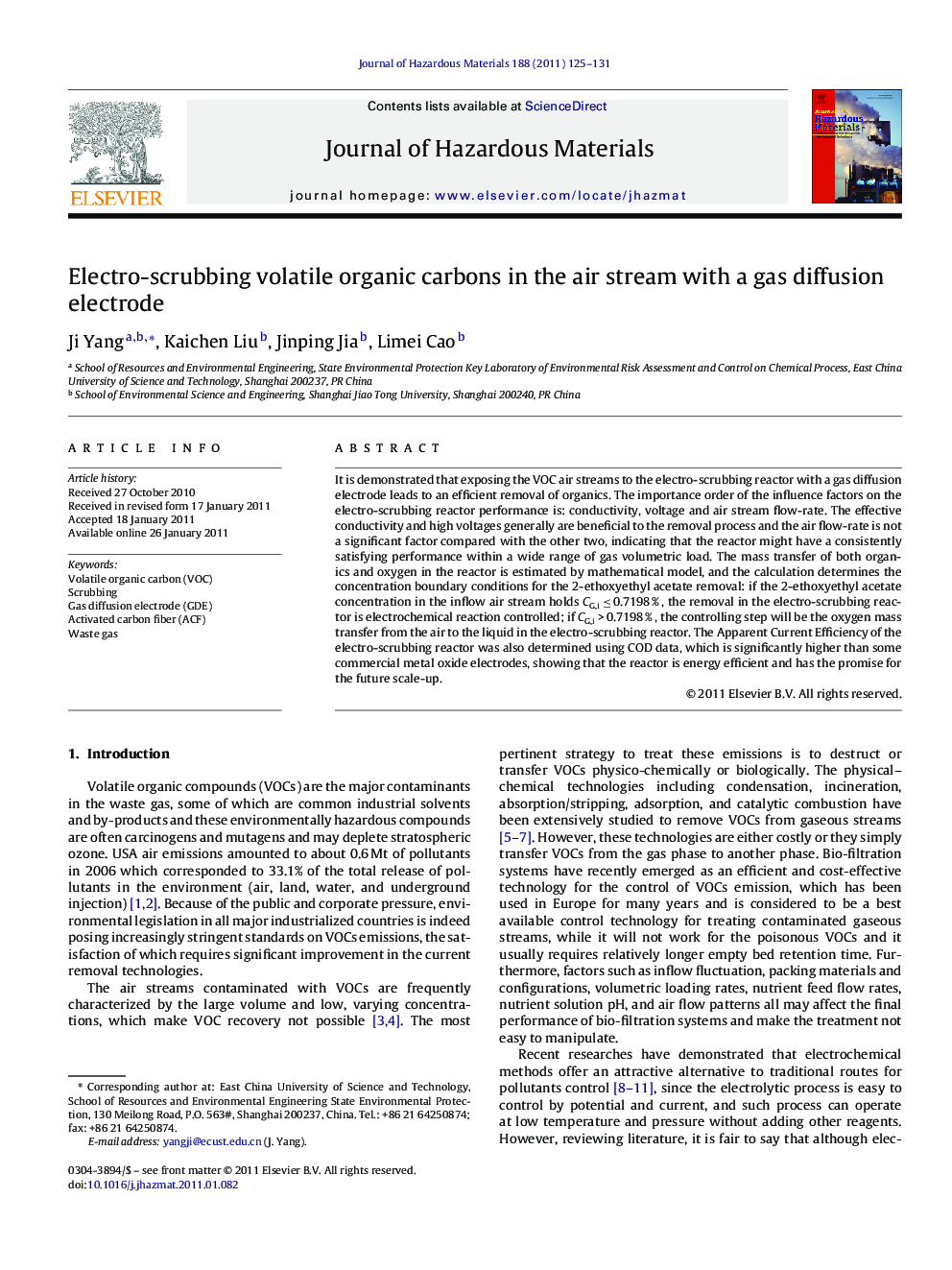| Article ID | Journal | Published Year | Pages | File Type |
|---|---|---|---|---|
| 579609 | Journal of Hazardous Materials | 2011 | 7 Pages |
Abstract
It is demonstrated that exposing the VOC air streams to the electro-scrubbing reactor with a gas diffusion electrode leads to an efficient removal of organics. The importance order of the influence factors on the electro-scrubbing reactor performance is: conductivity, voltage and air stream flow-rate. The effective conductivity and high voltages generally are beneficial to the removal process and the air flow-rate is not a significant factor compared with the other two, indicating that the reactor might have a consistently satisfying performance within a wide range of gas volumetric load. The mass transfer of both organics and oxygen in the reactor is estimated by mathematical model, and the calculation determines the concentration boundary conditions for the 2-ethoxyethyl acetate removal: if the 2-ethoxyethyl acetate concentration in the inflow air stream holds CG,i â¤Â 0.7198 % , the removal in the electro-scrubbing reactor is electrochemical reaction controlled; if CG,i > 0.7198 % , the controlling step will be the oxygen mass transfer from the air to the liquid in the electro-scrubbing reactor. The Apparent Current Efficiency of the electro-scrubbing reactor was also determined using COD data, which is significantly higher than some commercial metal oxide electrodes, showing that the reactor is energy efficient and has the promise for the future scale-up.
Related Topics
Physical Sciences and Engineering
Chemical Engineering
Chemical Health and Safety
Authors
Ji Yang, Kaichen Liu, Jinping Jia, Limei Cao,
